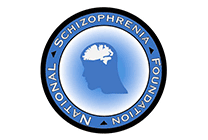 | | | 


| Historical Figures Related To Schizophrenia | |
|
|
|
  | | Recent Heroes | | | Although Freudian thinking tended to dominate American psychiatry during the first half of the 20th century, the 1950s brought a re-emergence in the biological study of schizophrenia.
Perhaps the most effective move in this direction came in 1952 with the discovery of Thorazine, the first antipsychotic medication. This work on Thorazine was done largely in France by Henri Laborit, Jean Delay, and Pierre Deniker, and then quickly spread throughout the world.
About the same time in the 1950s, a group of scientists at Washington University in St. Louis also began making strides toward the physical basis of mental illness. These were Eli Robins, Samuel Guze, and George Winoker, and they, along with their students, were called the Neo-Kraepelinians, in reference to Emil Kraepelin - the 19th Century psychiatrist who emphasized the biological make-up of schizophrenia and other brain disorders.
These Neo-Kraepelinians were often ridiculed in the 1950s for their biological and empirical point of view, in place of the Freudian psychodynamic talk therapy. But as the psychiatric medications became more effective, the Neo-Kraepelinian revival came to dominate the field. One of the lasting contributions of the Washington University group was an emphasis on correct diagnosis, with their first published diagnostic criteria appearing in the Archives of General psychiatry in 1972. This work strongly influenced the American Psychiatric Association, which edged out much of the Freudian ideation in their 1980 Diagnostic and Statistical Manual III, and replaced it with Neo-Kraepelinian Notions.
In the 1980s the Alliance for the Mentally Ill began its work as a popular movement helping those with psychiatric disorders. At about the same time, Dr. E. Fuller Torrey published the first edition of his book Surviving Schizophrenia, which described the illness in terms that the common man could understand. Torrey has since been in the forefront on most of the scientific and political issues related to schizophrenia.
Since Torrey, other popular books have been published related to our illness and the other brain disorders. One such book is The Broken Brain by Nancy Andreasen, M.D., Ph.D. Andreasen coined the term "students of schizophrenia" to refer to scientists and others who intensely study the illness.
And there are still many students of schizophrenia seeking medical methods to reduce our mental pain. One example is Paul Janssen, M.D., who introduced both Haldol and Risperdal as antipsychotic medications. In fact, each medication, as part of its history, a chemist who designed the compound, as well as scientists and medical doctors who do the experimental research to see if the medications are helpful.
|
|
|
